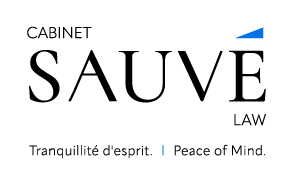The Complete Guide to Probate in Ontario: From First Steps to Final Distribution
An Honour and a Heavy Responsibility
When a loved one passes away, you are faced with the dual burden of navigating personal grief while simultaneously managing a host of new, unfamiliar responsibilities. If you have been named as the Estate Trustee—commonly known as the executor—you have been entrusted to carry out their final wishes. This role is a significant honour, but it comes with a long list of complex duties: securing assets, notifying government agencies, paying final bills, and ultimately, distributing the estate to the rightful beneficiaries.
For most first-time Estate Trustees, one of the first and most intimidating hurdles is a single word: probate. What is it? Is it always required? What does the process actually involve, and what are the risks if you get it wrong? The questions can feel overwhelming during an already challenging time.
At Cabinet Sauvé Law, we believe that a clear roadmap is the best tool for navigating a difficult journey. This comprehensive guide is designed to demystify the probate process in Ontario. We will walk you through every critical stage in plain language, from the initial application to the final distribution, giving you the clarity and confidence needed to fulfill your duties correctly and with true Peace of Mind.
Part 1: Understanding the Fundamentals of Probate
What Exactly is "Probate"? 📜
While everyone uses the term "probate," the official legal term in Ontario is a Certificate of Appointment of Estate Trustee. Think of this certificate as the estate’s official seal of approval from the Superior Court of Justice. It is a legal document that formally validates the deceased’s Will and grants the named Estate Trustee the authority to manage the estate’s assets.
Essentially, the court is confirming three key things:
- The submitted Will is indeed the last and valid testament of the deceased.
- The person applying is the correct and legally authorized individual to act as the Estate Trustee.
- The court officially grants this person the power to begin managing the estate.
In the simplest terms, the certificate is the master key that allows the Estate Trustee to access and control the deceased's assets. Without it, banks, investment firms, and the land registry office will not grant you access, as they have no legal proof of your authority.
What if There Is No Will (An Intestacy)?
A common misconception is that probate only applies if there is a Will. If a person dies "intestate" (without a Will), the process is still necessary, but it’s often more complicated. A family member (typically the next-of-kin, such as a spouse or child) must apply to the court to be appointed as the "Estate Trustee Without a Will."
In this case, the court's certificate grants the authority to manage the estate, which will then be distributed according to a rigid formula set out in Ontario's succession laws. The court application for an intestate estate requires additional steps, such as posting a bond to protect the estate, making the guidance of a lawyer even more critical.
Part 2: The Probate Process: A Step-by-Step Journey
Applying for probate is not a single action but a sequence of detailed steps. Each must be completed accurately to avoid costly delays and potential legal challenges.
Step 1: Assembling the Foundational Documents
Before any forms can be filled out, the Estate Trustee must gather all the necessary information. This includes:
- The Original Will: The court requires the original, signed document. A copy will not suffice unless you get special permission from the court, which is a difficult process.
- Proof of Death: You will need an official Death Certificate issued by the province.
- A Complete Inventory of Assets and Liabilities: This is the most labour-intensive part. You must create a detailed list of everything the deceased owned (real estate, bank accounts, vehicles, investments, personal property) and everything they owed (mortgages, loans, credit card debt, taxes).
- Names and Addresses: You will need the full legal names and current addresses for all beneficiaries named in the Will.
Step 2: Accurately Valuing the Estate
For the court application, you must declare the total value of all assets that are governed by the Will. This requires determining the fair market value of each asset as of the date of death. For some assets, like a bank account, this is simple. For others, it requires professional help:
- Real Estate: A professional appraisal is often needed to determine the value of a property.
- Business Interests: Valuing shares in a private corporation requires a business valuator.
- Valuable Collections: Items like art, jewelry, or classic cars may need to be appraised.
This valuation is critical as it forms the basis for calculating the Estate Administration Tax.
Step 3: Preparing and Filing the Court Application
The application itself consists of several detailed court forms. The primary document is the "Application for a Certificate of Appointment of Estate Trustee with a Will." This application includes sworn affidavits where you must attest to the facts, confirm you’ve made a diligent search for any other Wills, and provide the detailed asset inventory.
These forms must be completed perfectly. Even minor errors, typos, or omissions can cause the court to reject the application, setting the process back by weeks or even months. The completed application is then filed with the Ontario Superior Court of Justice in the jurisdiction where the deceased lived.
Step 4: Paying the Estate Administration Tax
When you file the application, the Estate Administration Tax (often called the "probate fee") must be paid. This is a provincial tax based on the total value of the estate you calculated in Step 2. We will cover the calculation in detail in the next section.
Step 5: Administering the Estate
Once the court approves your application and issues the Certificate of Appointment, your work as Estate Trustee truly begins. With this document in hand, you can now:
- Open a bank account in the name of the estate.
- Present the certificate to banks to close the deceased’s accounts and transfer the funds to the estate account.
- Sell real estate and other assets as required.
- Pay all outstanding debts and file the final tax returns for the deceased.
- After all debts and taxes are paid, you can prepare a final accounting for the beneficiaries and distribute the remaining assets according to the Will.
Part 3: Key Financial and Strategic Considerations
When is Probate Not Required? A Deeper Look
Probate isn't always a foregone conclusion. The need for it depends entirely on the type of assets and how they are owned. Assets that have a pre-arranged path to a new owner can bypass the Will and, therefore, the probate process.
- Assets Held in Joint Tenancy: When property (like a house or vehicle) is held as "joint tenants with right of survivorship," it automatically passes to the surviving owner(s) upon death. It does not form part of the estate. This is different from "tenants in common," where each owner's share does go to their estate.
- Assets with Designated Beneficiaries: Many financial products allow you to name a beneficiary directly. This includes RRSPs, RRIFs, TFSAs, pensions, and life insurance policies. These funds flow directly to the named person outside of the estate.
- The Multiple Wills Strategy: For business owners or individuals with significant assets, a lawyer can draft two Wills: a Primary Will that covers assets requiring probate (like real estate and bank accounts) and a Secondary Will that covers assets not requiring probate (like shares in a private corporation). This is a sophisticated legal strategy used to legally minimize Estate Administration Tax.
Calculating the Estate Administration Tax 💰
As mentioned, this tax is paid upfront with your court application. In Ontario, the rate is calculated as follows:
- $0 on the first $50,000 of the estate's value.
- $15 for every $1,000 (or part thereof) of value over $50,000.
For example, for an estate valued at $850,000:
- The first $50,000 is exempt.
- The remaining $800,000 is taxed.
- ($800,000 / $1,000) x $15 = $12,000 in Estate Administration Tax.
It is crucial to understand that the tax is based on the gross value of the assets, not the net value after debts are subtracted.
The Risks of Going It Alone: Why a Lawyer is Essential
Trying to figure out the Probate process, whether it applies, how to handle it, etc. can be confusing whether you're in the role of an Estate Trustee or not, and could come with significant legal implications and potential personal liability. Attempting to navigate the probate process without professional guidance can lead to serious pitfalls:
- Personal Liability for Mistakes: If you make an error—such as incorrectly distributing assets, paying beneficiaries before creditors, or failing to pay taxes—you can be held personally financially responsible for the losses.
- Costly Application Errors: A rejected court application costs time and money to fix, delaying the administration of the estate and frustrating beneficiaries.
- Navigating Family Disputes: If beneficiaries disagree with the Will or your actions as Trustee, a lawyer acts as a crucial intermediary and ensures you are acting in accordance with the law, protecting you from claims.
- Complexity and Stress: The sheer volume of paperwork, deadlines, and legal requirements is a heavy burden to bear, especially while grieving.
Hiring an experienced lawyer is not just about filling out forms. It’s about having a trusted advisor who can manage the entire process, ensure legal compliance, protect you from liability, and handle all communications with the court and financial institutions.
The journey of settling an estate can feel complex and overwhelming, whether you are the appointed Estate Trustee, a named beneficiary, or simply planning ahead for your own family. Understanding the process is the first step toward ensuring everything is handled smoothly and fairly.
If you have questions or require guidance on any aspect of estate administration in the Ottawa, Rockland, Barrie, or surrounding communities, our experienced team is here to provide clarity.
Ensuring the process is handled with care and legal precision is the best way to achieve true Peace of Mind for everyone involved. We invite you to contact us to discuss how we can help.












